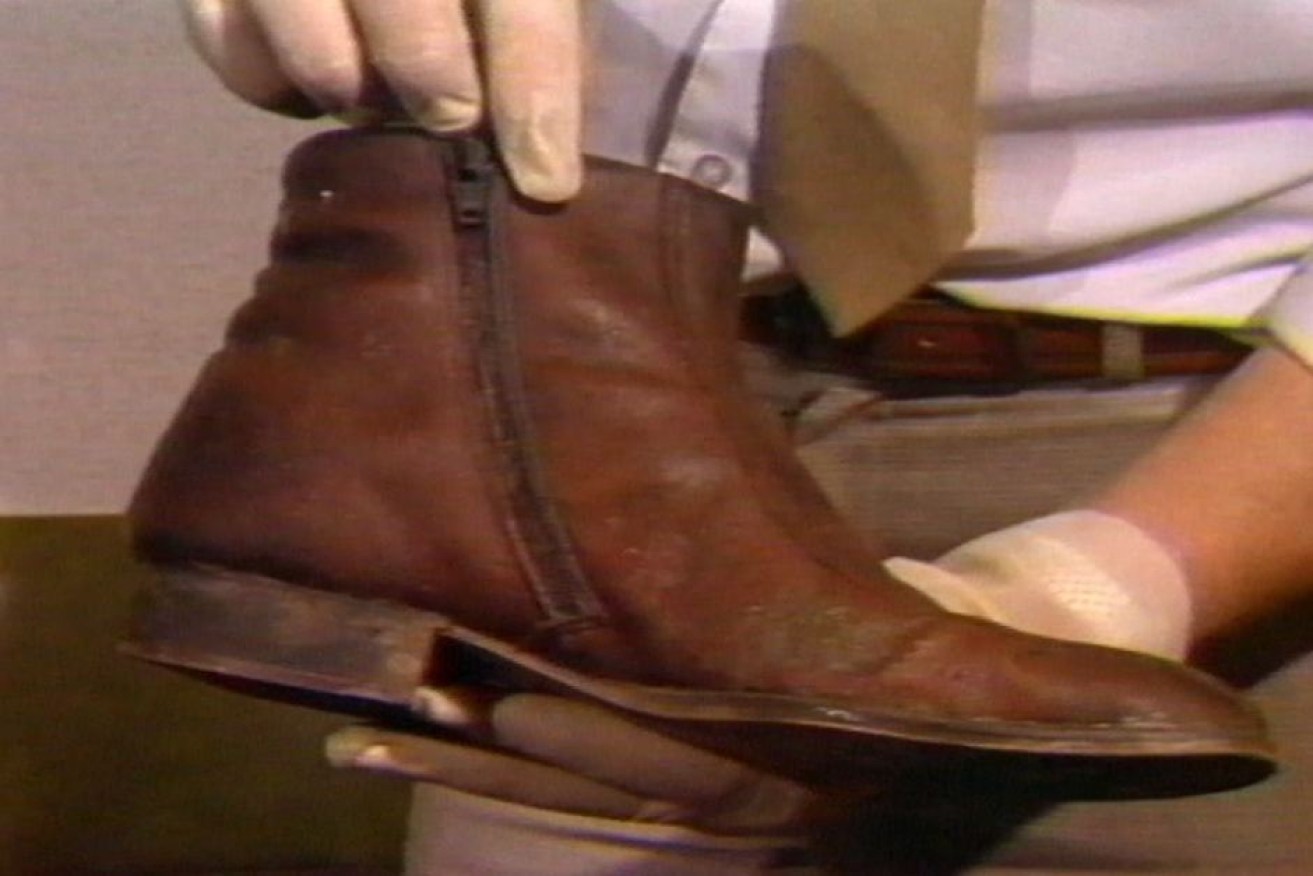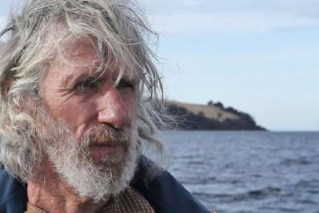Police use DNA technology to solve 34yo leg mystery

Police display the boot found on the leg in Launceston's Tamar River in 1984. Photo: ABC
Police have used DNA technology to link a human leg found in a Tasmanian river 34 years ago to a missing Irishman.
Launceston Port workers found the leg in the Tamar River in April 1984.
At the time, police used a boot found on the leg to appeal to the public for help.
“At the moment it’s the only lead we have to assist us in identifying the leg,” Detective Sergeant David Powell said at the time.
“It’s a size 8, brown casual type boot with a zip side.”
An inquest into the discovery of the leg was held a year later.
The coroner found “the injury to the leg was such that no person could have survived it”.
A 36-year-old Irishman, Eamon Britton, was reported missing in June 1983.
He was last seen at a Launceston motel and matched the description of the adult male experts believed the leg belonged to.
The size of the boot corresponded with his shoe size … but there was no evidence linking the two.
The leg was finally buried at a cemetery at Kingston south of Hobart.

The grave at the Kingston lawn cemetery from where the leg was exhumed. Photo: ABC
In 2017, the leg was exhumed after advice from forensics that DNA profiling could be used to resolve Mr Britton’s disappearance and suspected death.
A DNA sample was also taken from Mr Britton’s brother.
Coronial investigation
Coroner Simon Cooper investigated the case and said the technology had enabled the leg to be linked to Mr Britton.
But the coroner said there was no evidence to make a finding as to the cause of death.
Forensic biologist Pam Scott said DNA profiling was proving useful in missing persons cases.
“Obviously it gives us an opportunity to provide answers,” Ms Scott said.
“Hopefully some closure for families, with techniques that weren’t available in earlier days.
“We have a DNA testing kit that will target the Y chromosomes of male individuals and that was used in this case.
“We need to have a comparison sample and so in this particular instance where we are targeting male DNA we need a male relative in that same line to use as a reference material.
“It certainly was a process in terms of the exhumation and then trying to sample the remains given the intervening time frame.”
-ABC







